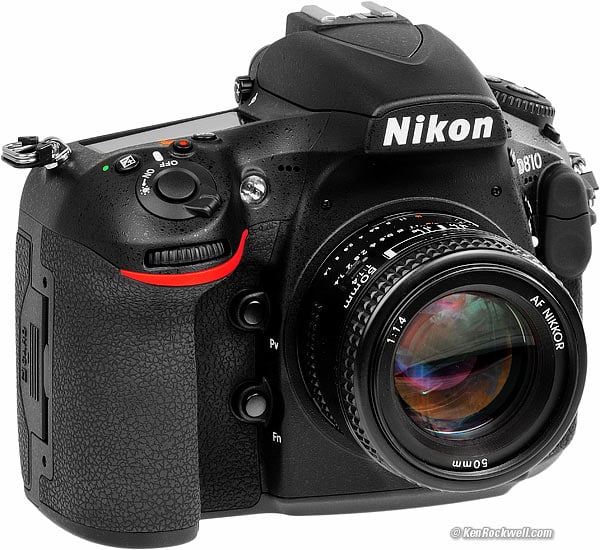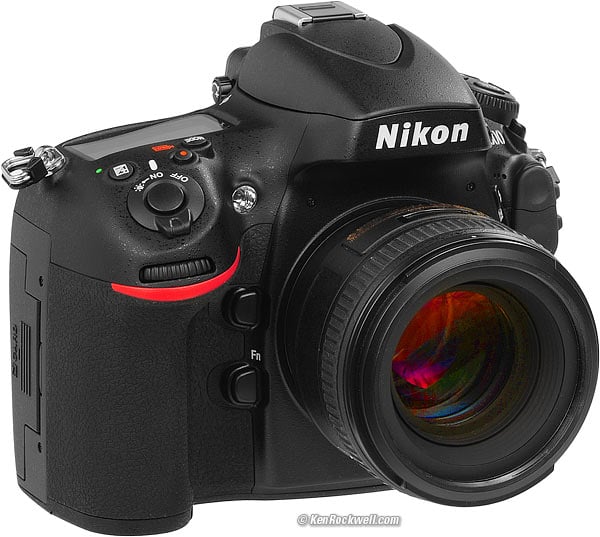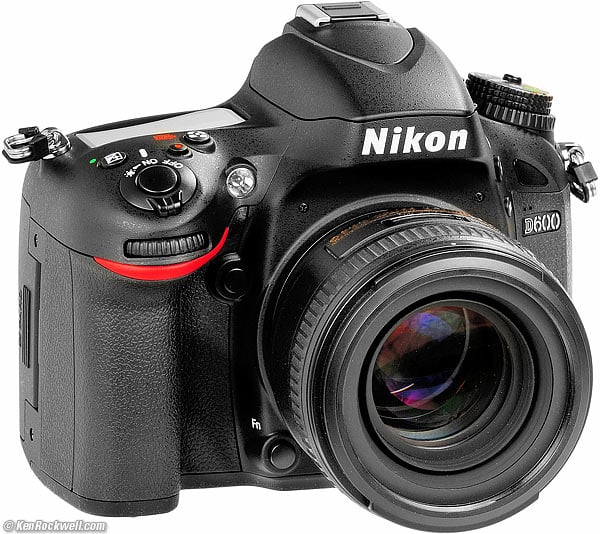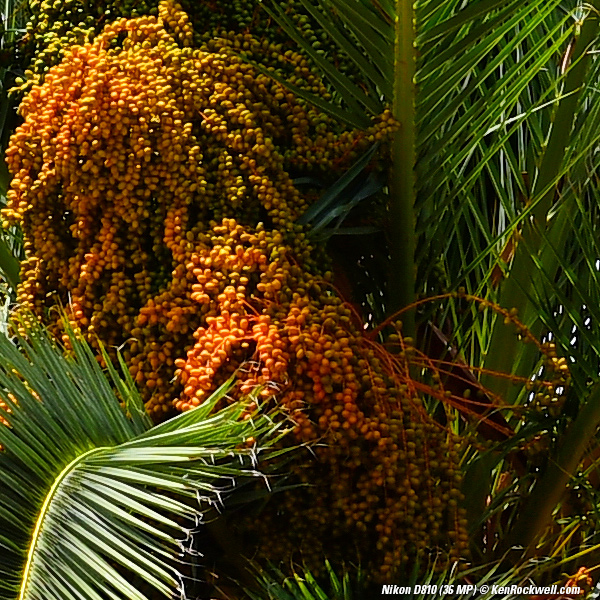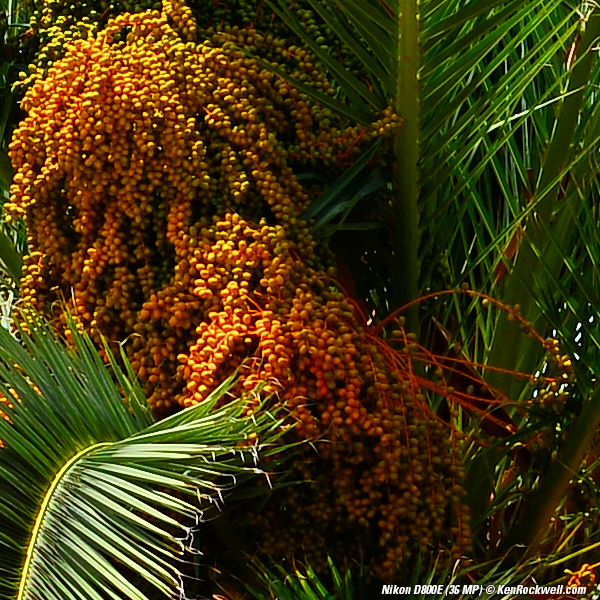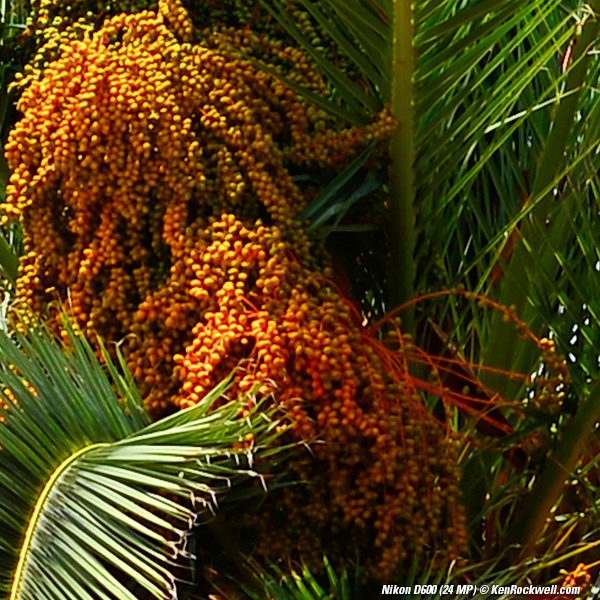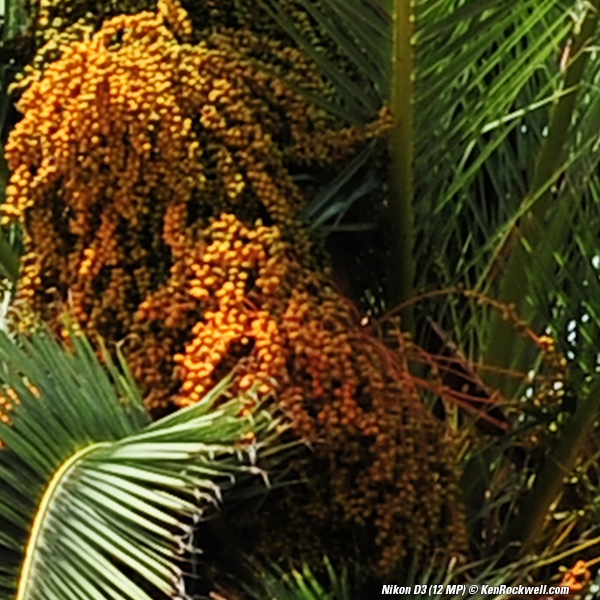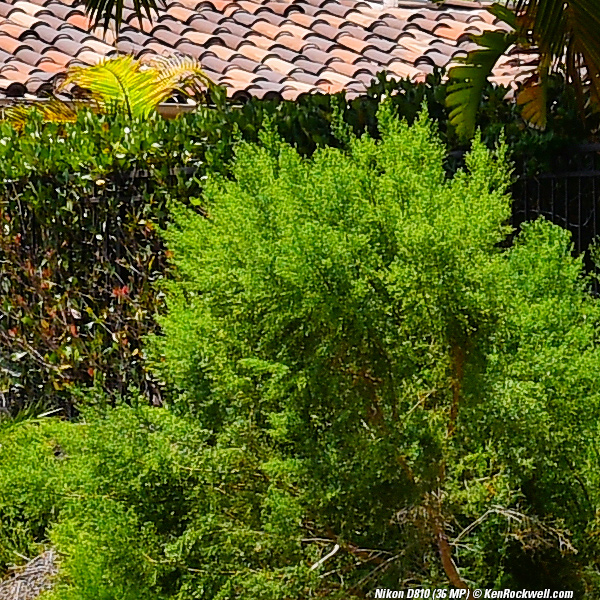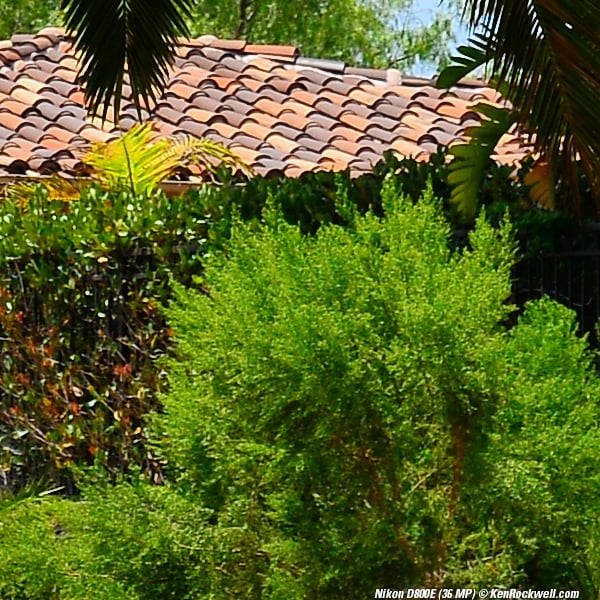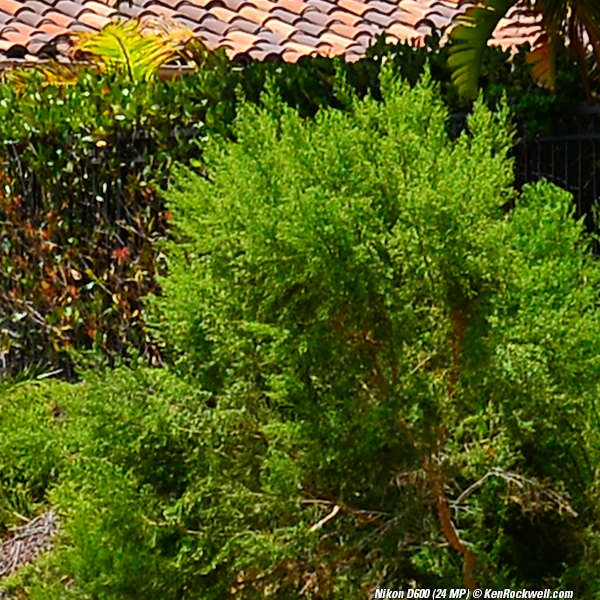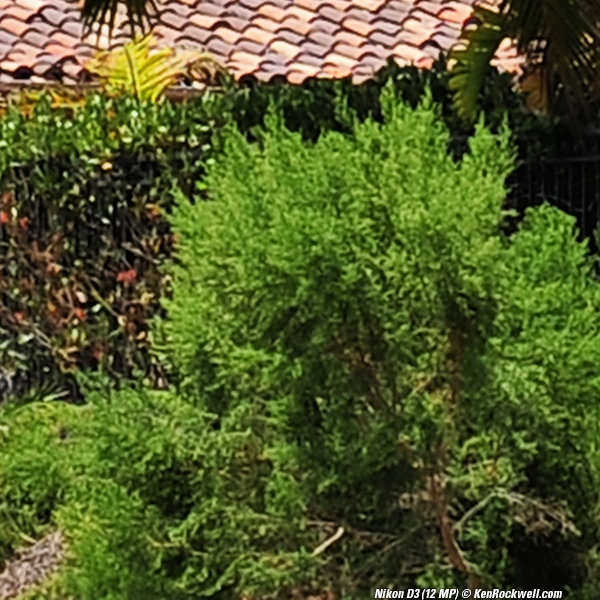Analysis top
Intro Images Analysis Technik Recommendations
The D3 is much softer, which is expected since it has only one-third the resolution.
The D600 is pretty close to the D810 and D800E, which is reasonable as 24 MP is only 22% less than 36 MP. It's not a 50% difference as consumers might presume. The real difference is in linear resolution, which is only 22% different. There are 7,360 horizontal pixels in the D810 and D800E images, and 6,016 horizontal pixels in the D600 image. Unless you're printing mural-sized as I'm showing here and you're looking at the images as close as you are to your screen right now, there would be no difference.
The D810 is only slightly sharper than the D800E, which is as I suspected. (The D800 is only slightly softer than the D800E.)
Does this matter? Not to most people, but most people don't buy the D810. The D810 is the go-to camera for professional landscape and nature photographers, and if this slight difference in sharpness means that an editor or corporate art buyer picks your D810 image over an image shot by someone else with the old D800E, you just paid for your new camera.
In the jungle of professional photography, or in any other highly competitive sport, even a slight edge is often all it takes to win.
A professional photographer and his wife were out photographing wildlife in the forest. As they slept in their tent that night, a bear suddenly woke them and it looked like they were going to have to make a run for it.
They both knew they couldn't outrun the bear, yet the woman proceeded to put on her hiking boots. Curious, the man asked why she thought she could outrun the bear. She replied "I can't outrun the bear; all I have to do is outrun you."
As successful pros know, you just have to be a little better, faster or smarter than the other guy, and you win. Just as hundredths of a second can make or break a race, and even the teeniest differences from one shot to the next can define which one gets picked over the hundreds, or thousands, of other submissions.
Technik top
Intro Images Analysis Technik Recommendations
These were shot at ISO 100 at 1/250 at f/8. The D3 only goes to ISO 200, so it was shot at 1/500 at f/8.
I used one of Nikon's sharpest laboratory reference lenses, the 55mm f/2.8 AF Micro-NIKKOR. I chose f/8 instead of f/5.6, where it is already diffraction limited, to give more real-world depth-of-field. I'm amazed that so much is in focus; I focussed on the tree in the center.
All were on a tripod, and all cameras were set to VIVID Picture Control with +3 saturation and 7 sharpening. The D810 additionally was left at its default +1 Clarity setting, a new setting which isn't adjustable in the other cameras. All were shot at LARGE JPG FINE Optimal Quality. (If shot as NEF, it would add unknown variations in sharpness depending on how whatever software I used to open the NEFs chose to apply sharpening to the images from each of these different cameras.
The D810 and D800E images are presented at 100% pixel-to-pixel. The D600 and D3 images are shown at the same magnification, so their fewer pixels had to be enlarged slightly to keep the overall image magnifications the same. To do this, the smaller images were resized to the same 7,360 pixel horizontal size as the D810 and D800E images.
Recommendations top
Intro Images Analysis Technik Recommendations
If you earn your living by your images, or otherwise demand only the best, the D810 is sharper than anything else.
If you don't particularly care about extreme resolution or if you print at more reasonable sizes, then the D600 is also more than good enough. In fact, at most reasonable print sizes like 16 x 20," even the D3 has more than enough pixels to make ultra-sharp prints.
The need for the extra resolution of the D810 is when you're hanging museum exhibits, or otherwise demand or deserve only the very best.
Help me help you top
I support my growing family through this website, as crazy as it might seem.
The biggest help is when you use any of these links when you get anything, regardless of the country in which you live. It costs you nothing, and is this site's, and thus my family's, biggest source of support. These places have the best prices and service, which is why I've used them since before this website existed. I recommend them all personally.
If you find this
page as helpful as a book you might have had to buy or a workshop you may
have had to take, feel free to help me continue helping everyone.
If you've gotten your gear through one of my links or helped otherwise, you're family. It's great people like you who allow me to keep adding to this site full-time. Thanks!
If you haven't helped yet, please do, and consider helping me with a gift of $5.00.
As this page is copyrighted and formally registered, it is unlawful to make copies, especially in the form of printouts for personal use. If you wish to make a printout for personal use, you are granted one-time permission only if you PayPal me $5.00 per printout or part thereof. Thank you!
Thanks for reading!
Mr. & Mrs. Ken Rockwell, Ryan and Katie.
Home Donate New Search Gallery Reviews How-To Books Links Workshops About Contact |

